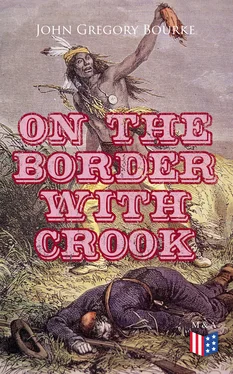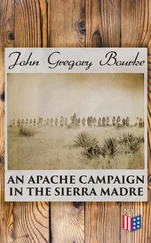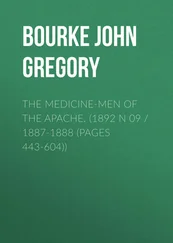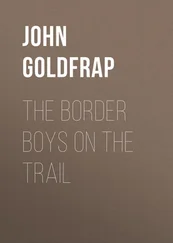John Gregory Bourke
Madison & Adams Press, 2021
Contact: info@madisonadamspress.com
EAN 4064066384104
This is a publication of Madison & Adams Press. Our production consists of thoroughly prepared educational & informative editions: Advice & How-To Books, Encyclopedias, Law Anthologies, Declassified Documents, Legal & Criminal Files, Historical Books, Scientific & Medical Publications, Technical Handbooks and Manuals. All our publications are meticulously edited and formatted to the highest digital standard. The main goal of Madison & Adams Press is to make all informative books and records accessible to everyone in a high quality digital and print form.
PREFACE.
CHAPTER I.
CHAPTER II.
CHAPTER III.
CHAPTER IV.
CHAPTER V.
CHAPTER VI.
CHAPTER VII.
CHAPTER VIII.
CHAPTER IX.
CHAPTER X.
CHAPTER XI.
CHAPTER XII.
CHAPTER XIII.
CHAPTER XIV.
CHAPTER XV.
CHAPTER XVI.
CHAPTER XVII.
CHAPTER XVIII.
CHAPTER XIX.
CHAPTER XX.
CHAPTER XXI.
CHAPTER XXII.
CHAPTER XXIII.
CHAPTER XXIV.
CHAPTER XXV.
CHAPTER XXVI.
CHAPTER XXVII.
CHAPTER XXVIII.
CHAPTER XXIX.
CHAPTER XXX.
Table of Contents
THERE is an old saying in the army which teaches that you can never know a man until after having made a scout with him in bad weather. All the good qualities and bad in the human makeup force their way to the surface under the stimulus of privation and danger, and it not infrequently happens that the comrade who at the military post was most popular, by reason of charm of manner and geniality, returns from this trial sadly lowered in the estimation of his fellows, and that he who in the garrison was most retiring, self-composed, and least anxious to make a display of glittering uniform, has swept all before him by the evidence he has given of fortitude, equanimity, courage, coolness, and good judgment under circumstances of danger and distress. But, whether the maxim be true or false, it is hardly too much for me to claim a hearing while I recall all that I know of a man with whom for more than fifteen years, it was my fortune to be intimately associated in all the changing vicissitudes which constituted service on the “border” of yesterday, which has vanished never to return.
It is not my purpose to write a biography of my late friend and commander—such a task I leave for others to whom it may be more congenial; speaking for myself, I am compelled to say that it is always difficult for me to peruse biography of any kind, especially military, and that which I do not care to read I do not care to ask others to read. In the present volume, there will be found collected descriptions of the regions in which the major portion of General Crook’s Indian work was carried on; the people, both red and white, with whom he was brought into contact; the difficulties with which he had to contend, and the manner in which he overcame them; and a short sketch of the principles guiding him in his justly famous intercourse with the various tribes—from British America to Mexico, from the Missouri River to the Pacific Ocean—subjugated by him and afterwards placed under his charge.
A military service of nearly forty consecutive years—all of which, excepting the portion spent in the civil war, had been face to face with the most difficult problems of the Indian question, and with the fiercest and most astute of all the tribes of savages encountered by the Caucasian in his conquering advance across the continent—made General Crook in every way worthy of the eulogy pronounced upon him by the grizzled old veteran, General William T. Sherman, upon hearing of his death, that he was the greatest Indian-fighter and manager the army of the United States ever had.
In all the campaigns which made the name of George Crook a beacon of hope to the settler and a terror to the tribes in hostility, as well as in all the efforts which he so successfully made for the elevation of the red man in the path of civilization and which showed that Crook was not a brutal soldier with no instincts save those for slaughter, but possessed of wonderful tenderness and commiseration for the vanquished as well as a most intelligent appreciation of the needs and capabilities of the aborigines, I was by his side, a member of his military staff, and thus obtained an insight into the charms and powers of a character which equalled that of any of the noble sons of whom our country is so justly proud.
Table of Contents
OLD CAMP GRANT ON THE RIO SAN PEDRO—DAILY ROUTINE OF LIFE—ARCHITECTURE OF THE GILA—SOLDIERS AS LABORERS—THE MESCAL AND ITS USES—DRINK AND GAMBLING—RATTLESNAKE BITES AND THE GOLONDRINA WEED—SODA LAKE AND THE DEATH VALLEY—FELMER AND HIS RANCH.
DANTE ALIGHIERI, it has always seemed to me, made the mistake of his life in dying when he did in the picturesque capital of the Exarchate five hundred and fifty years ago. Had he held on to this mortal coil until after Uncle Sam had perfected the “Gadsden Purchase,” he would have found full scope for his genius in the description of a region in which not only purgatory and hell, but heaven likewise, had combined to produce a bewildering kaleidoscope of all that was wonderful, weird, terrible, and awe-inspiring, with not a little that was beautiful and romantic.
The vast region in the southwest corner of the United States, known on the maps as the Territories of Arizona and New Mexico, may, with perfect frankness, be claimed as the wonder-land of the northern part of America, with the exception, perhaps, of the Republic of Mexico, of which it was once a fragment, and to which, ethnographically, it has never ceased to belong.
In no other section can there be found such extensive areas of desert crossed in every direction by the most asperous mountains, whose profound cañons are the wonder of the world, whose parched flanks are matted with the thorny and leafless vegetation of the tropics, and whose lofty summits are black with the foliage of pines whose graceful branches bend in the welcome breezes from the temperate zone. Here one stumbles at almost every step upon the traces of former populations, of whom so little is known, or sees repeated from peak to peak the signal smokes of the fierce Apaches, whose hostility to the white man dates back to the time of Cortés.
I will begin my narrative by a brief reference to the condition of affairs in Arizona prior to the arrival of General Crook, as by no other means can the arduous nature of the work he accomplished be understood and appreciated. It was a cold and cheerless day—March 10, 1870—when our little troop, “F” of the Third Cavalry, than which a better never bore guidon, marched down the vertical-walled cañon of the Santa Catalina, crossed the insignificant sand-bed of the San Pedro, and came front into line on the parade-ground of Old Camp Grant, at the mouth of the Aravaypa. The sun was shining brightly, and where there was shelter to be found in the foliage of mesquite or cottonwood, there was the merry chatter of birds; but in the open spaces the fierce breath of the norther, laden with dust and discomfort, made the new-comers imagine that an old-fashioned home winter had pursued them into foreign latitudes. A few military formalities hastily concluded, a few words of kindly greeting between ourselves and the members of the First Cavalry whom we met there, and ranks were broken, horses led to the stables, and men filed off to quarters. We had become part and parcel of the garrison of Old Camp Grant, the memory of which is still fragrant as that of the most forlorn parody upon a military garrison in that most woe-begone of military departments, Arizona.
Читать дальше












